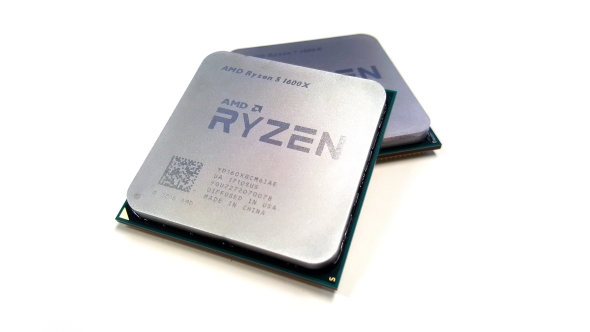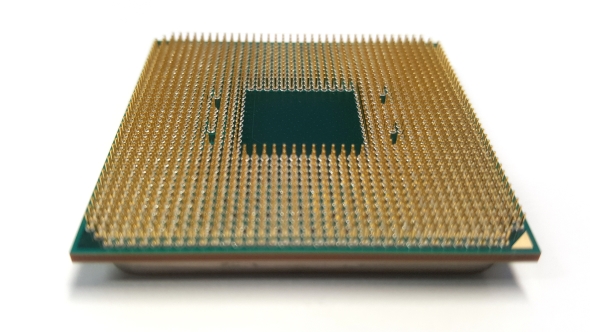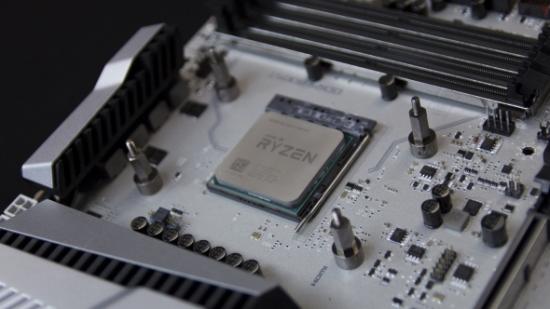We’re six months on from the release of AMD’s Ryzen CPU range. This is when the platform should be at its most stable and had all the kinks ironed out through BIOS and microcode updates, so we should be able to get the most out of it. How far can we push our favourite Ryzen chip – the Ryzen 5 1600X – with our limited overclocking skills, then?
Overclocking isn’t some dark art, learn the basics with our simple guide on how to overclock.
The short, sad answer is: not much.
The 1600X is a six-core, 12-thread CPU that costs around the same as Intel’s current range of K-series Core i5 processors. The Intel chips were the go-to gaming CPUs because of their mix of great gaming performance, decent price, and overclocking performance. When the Ryzen 5 arrived, however, it became impossible to recommend a resolutely quad-core processor when you could pick one up for effectively the same price, but with three times the thread count.
The straight gaming performance of Ryzen isn’t quite there, but in real terms the differential between the Intel and AMD architectures, when most of the load is going onto the graphics card, is pretty minimal. But, at launch, there was no way to get anywhere near the overclocked performance of the Core i5, so we were hoping that six months later we’d have a little more headroom available to us.
The rated single-core Turbo clockspeed for the Ryzen 5 1600X is 4GHz, so that ought to be an absolute minimum frequency we should be looking at, especially with the competing Core i5 7600K able to hit 5.1GHz without too much effort.
To see what the 1600X is now capable of we’ve used a set of 3,200MHz G.Skill memory and MSI’s X370 XPower Gaming Titanium motherboard. The MSI board’s funky overclocking knob (it’s a physical thing, we’re not denigrating their pro-overclockers) claims in the manual it’s capable of running six-core Ryzens at 4.3GHz when you push it all the way up to 11, but we only got it booting automatically into 4.1GHz… and even then it crashes as soon as you load it up.

Even at lower, stable automatic settings the board pushes the CPU voltage up to 1.480v, which seems rather high to me. AMD themselves have said that 1.45v is sustainable on their Zen-based CPUs, but running at that level will affect the lifespan of your shiny new processor. So 1.480v is pushing it.
At launch, we were only able to get an all-core overclocked frequency of a flat 4GHz out of the Ryzen 5 1600X. That was with overclocking and this time around we’ve managed to hit that using AMD’s Wraith MAX air-cooler. The Wraith MAX is rated to deal with 140W TDP, while the Ryzen chips top out at 95W, so it’s got a fair amount of headroom in the chiller.
That said, we were able to push it a touch further using Corsair’s H110 liquid cooler. But, in all honesty, the performance difference between 4GHz and 4.05GHz is pretty minimal. Still, the benefits of water-cooling means we get a much quieter machine (48dB vs. around 60dB) and the peak-to-idle temperature performance is far superior too.

The intervening time has allowed AMD to enable better memory support on the Ryzen platform, however. At launch, we struggled to get a consistent 2,933MHz from all the chips and boards we tested, but now we’re able to get to 3,200MHz with little trouble, and that can make a difference on the AMD architecture.
In all, with the mildly-extended overclocking frequency, and improved memory support, we’ve been able to get another 13%-odd extra performance out of the Ryzen 5 1600X with the more stable, mature platform and a CPU voltage that isn’t going to melt our poor processor. And considering that’s all for free, that ain’t bad.
We’re still hoping that the Zen refresh planned for next year, which looks like it’s getting a die-shrink down from 14nm to 12nm, will provide greater efficiency from the new chips, and allow us to hit higher frequencies than Ryzen’s vanguard has afforded us.
